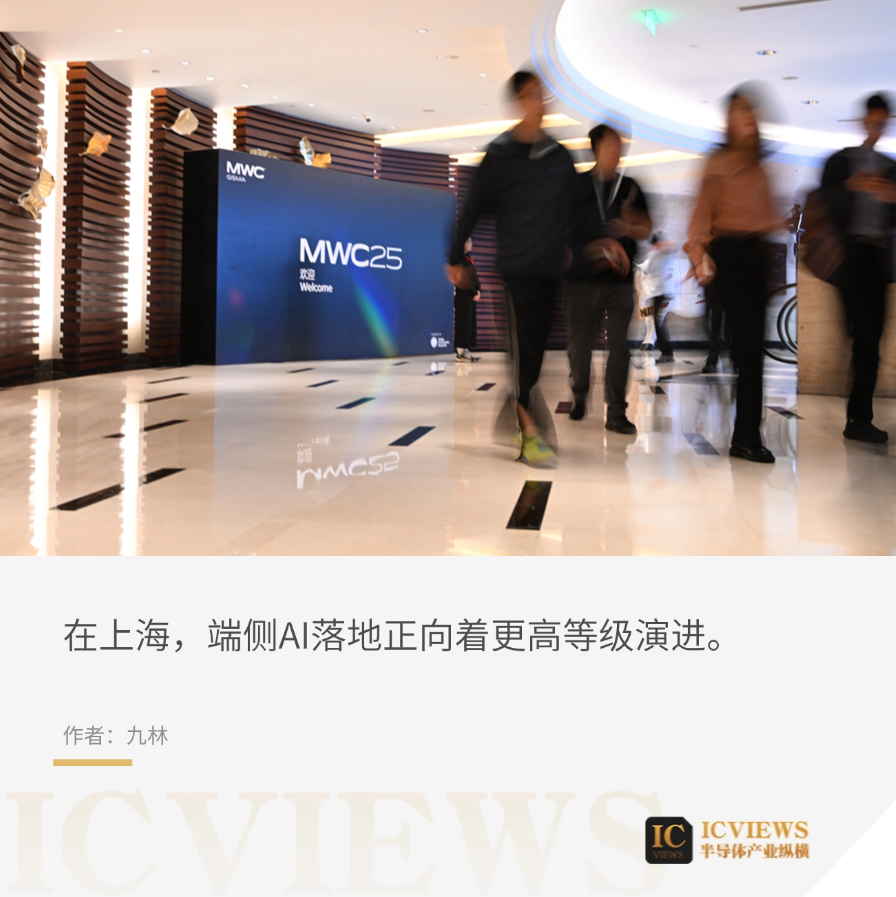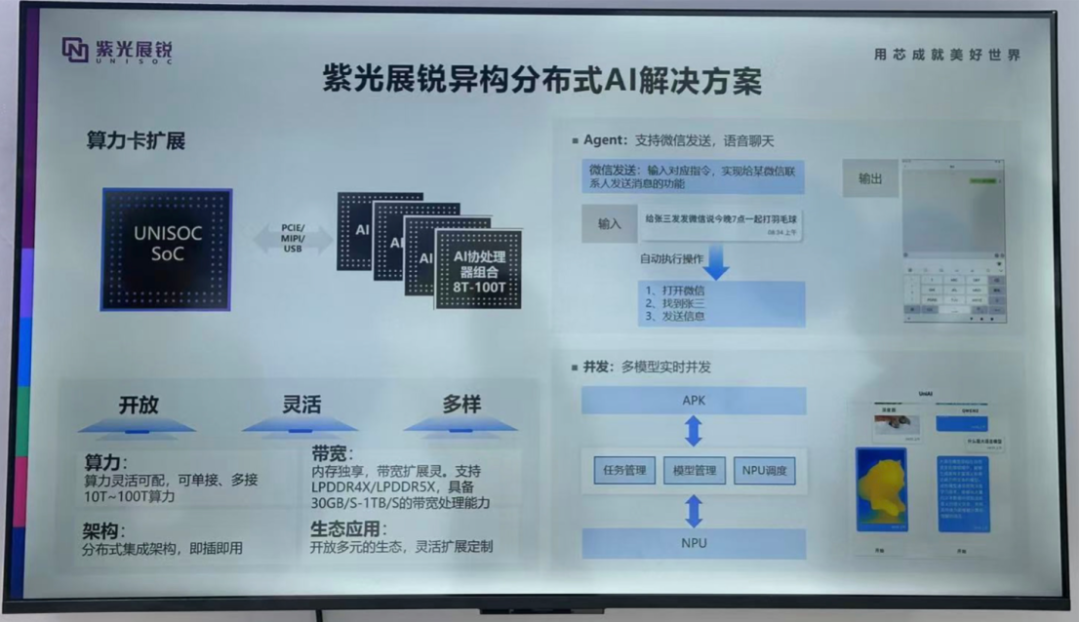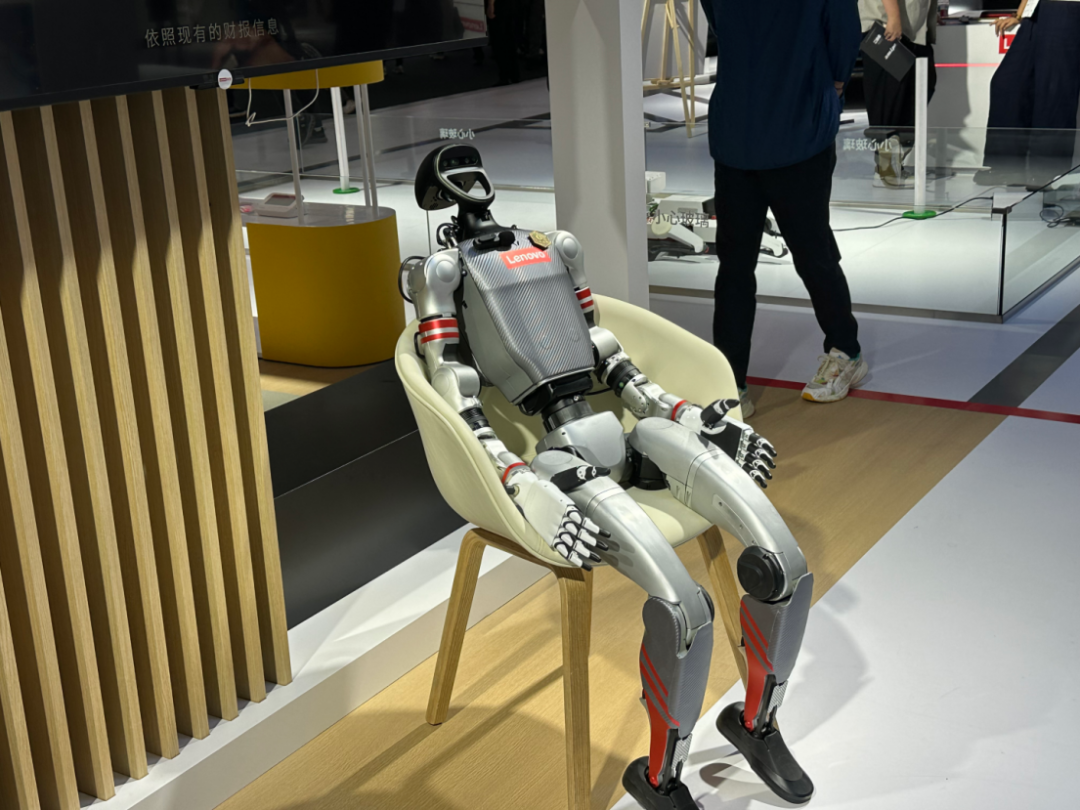MWC Shanghai: Pioneering Edge AI Implementation
![]() 06/20 2025
06/20 2025
![]() 549
549

June brought a buzz of cicadas to Shanghai, a city teeming with technological vitality. Amidst this bustling backdrop, the Mobile World Congress Shanghai (MWC Shanghai 2025) welcomed approximately 400 speakers and thought leaders, captivating global attention.
The exhibition hall was abuzz with activity. Robots deftly turned and shook hands, Lenovo's roll-up screen AI PC rose gracefully, and Honor's AI blueprint unfolded—a vivid illustration of edge AI implementation in action.
01
AI+ for All
The cornerstone of edge AI implementation lies in the chip.
Unisoc, with over two decades of experience in the communications semiconductor industry, boasts impressive market shares: 13% for smartphone chips, 25% for cellular IoT chips, and 60% for smart children's watches, ranking third, second, and first globally, respectively.
At MWC Shanghai, Unisoc unveiled its UNISOC edge AI platform solution, offering end-to-end AI platform delivery with superior performance, lower power consumption, and flexible configuration. This platform harnesses diverse chip solutions to unlock the era of "AI+ for All."
First, the single-chip AI solution. Unisoc integrates AI technology into its 5G SoC T9100, achieving a significant boost in AI performance. According to reports, this solution offers a 20% increase in large model generation speed and a 60% reduction in large model inference power consumption compared to previous heterogeneous solutions.

Second, the heterogeneous distributed AI solution. This solution offers a flexible and open combination of multiple computing power levels, supporting configurations from 1T to 100T and compatible with over 30 models of varying parameter sizes. It can support real-time concurrent large language models of different specifications across industries.
The UNISOC AI platform includes AI Agent and multiple solutions that bridge terminals and the cloud, enabling functions like AI drawing, AI voice chat, and AI intelligent search. This flexibility allows seamless integration with mobile phones, tablets, wearables, and automobiles, facilitating edge AI implementation.
Unisoc officials confirmed that multiple terminal applications, including BBK AI Learning Machines equipped with Unisoc T9100, have already been mass-produced and launched.
Unisoc's exploration of edge AI extends beyond these applications. As a global leader in three key fields, Unisoc continues to innovate.
Mobile SoC: Unisoc Sees 67.2% Year-on-Year Growth
Data indicates that Unisoc shipped approximately 110 million units in 2024, a 67.2% increase year-on-year. In mobile phones, Unisoc offers both 4G and 5G models, with 4G being the mainstay and 5G driving significant growth.
4G products include T7280, T7250, T7225, SC9832E, and SC9863A, while 5G products include T9100, T8200, and T8100. Products like nubia Neo 3 (T9100), Motorola moto G35, ZTE Yuanhang 3D, ZTE BladeV50 Design 5c (T8100), and Meizu Note 16 (T8200) have entered markets across Europe, Latin America, Southeast Asia, and South Asia.
Smart Wearables: Two Major Product Series
In smart wearables, Unisoc has developed two major product series: the Android OS-based Smart Watch series and the RTOS-based RTOS Watch series.
Android OS-based products include W517 (4G flagship AI smart wearable platform), W377E (4G high-performance smart wearable platform), and W377 (dual-core 4G smart wearable platform). RTOS-based products include W337 (4G RTOS flagship wearable platform), W307 (4G high-performance RTOS wearable platform), W117 (4G long-lasting RTOS wearable platform), and W217 (highly integrated 4G Cat1 RTOS wearable platform).
Unisoc's W377E has been adopted in multiple smartwatch products, including Xiaosumi SU12, although some users have reported slight heating issues. Meanwhile, W517 has been integrated into smart glasses like Shanji AI glasses Papajing and INMO Go2, the latter offering offline translation capabilities.
Unisoc's operating revenue has grown steadily, reaching RMB 11.7 billion in 2021 (a 78% increase), RMB 14 billion in 2022 (a 20% increase), and exceeding RMB 13 billion in 2023.
Aiming for IPO
In April 2023, Unisoc changed its name from "Unisoc (Shanghai) Technology Co., Ltd." to "Unisoc (Shanghai) Technology Co., Ltd." This change marks the completion of Unisoc's shareholding system reform, bringing it closer to an IPO listing.
Since 2024, Unisoc has completed multiple rounds of financing. In September 2024, it raised approximately RMB 4 billion, attracting investors from state-owned assets, financial platforms, securities firms, and social capital. In December 2024, Unisoc received another equity capital increase of nearly RMB 2 billion from Yuanhe Puhua, a renowned integrated circuit investor and the founder of Unisoc, Chen Datong. These funds will support the development of 5G, satellite communications, automotive electronics, and smart wearable chips, as well as innovative technology research.
02
What Else Can AI Add?
Lenovo
At MWC Shanghai 2025, Lenovo debuted Tianxi Personal Super Intelligence, Lenovo Lexiang Enterprise Super Intelligence, and City Super Intelligence on the international stage.
Tianxi Personal Super Intelligence redefines smart interaction with five functions: AI control, AI search, AI translation, AI notes, and AI services. It is now fully integrated into Lenovo's AI PCs.

Lexiang Super Intelligence-embedded Lexiang One Humanoid Robot
Lenovo Lexiang Enterprise Super Intelligence integrates Lenovo's business data and knowledge base, enabling cross-departmental and cross-regional resource allocation for task decomposition, process orchestration, and automated execution. Since its launch on May 7, Lexiang has seen a 270% increase in weekly active users and a 30% boost in order conversion rates.
Lenovo's approach to AI implementation is "One Body, Multiple Terminals": "One Body" refers to Tianxi Personal Super Intelligence, launched in May 2025 and upgraded to a hybrid architecture based on trusted computing and terminal-cloud integration; "Multiple Terminals" include AI PCs, AI mobile phones, AI tablets, and AIoT devices.
Data shows that Lenovo's AI terminal sales, including AI PCs and AI mobile phones, continue to grow rapidly. In the last fiscal year, Lenovo sold over 1 million AI PCs. In Q1 2025, Lenovo's moto mobile phones led the global small foldable category. During the "618" period, three Lenovo moto phones—moto razr 60 Ultra, moto razr 60, and moto razr 50—topped JD.com's small foldable phone list.
ZTE
Ni Fei, Senior Vice President of ZTE and President of the Terminal Business Unit, stated, "As a key driver of ZTE's 'second curve,' the terminal business focuses on AI 'hard technology' innovation and ecological layout while exploring 'soft culture' breakthroughs and promoting brand renewal in the consumer market."
At the exhibition, ZTE showcased a range of multi-form AI terminals, including the Nubia Z70S Ultra Photographer Edition, Nubia Tablet Pro, Nubia Flip 2, ZTE Changxing 60 Plus, ZTE Xiaoxian 60 Zhenqing Edition, 2-in-1 Cloud PAD, 2-in-1 Cloud Notebook, Free Screen, and other AI cloud computer innovations.
Additionally, ZTE exhibited its smart computing all-in-one machine. The ZTE-Zhejiang University collaborative Zhihai Education All-in-One Machine offers AI general and specialized courses, practical training, and accelerates AI education popularization. The AI automotive design collaboration with Dongfeng Motor enhances efficiency and creativity.
Quectel
Quectel showcased multiple smart terminals equipped with its AI solutions. The Qmi doll, featuring Quectel's AI toy overall solution, offers low-latency voice interaction and personalized functions like emotion recognition, scenario understanding, voice cloning, and custom wake-up words, enhancing the user experience.
Xingyuan Technology's smart vending machine, powered by Quectel's AI intelligent unmanned retail solution, leverages "dynamic vision + edge computing" to achieve precise product recognition and second-level response speed, offering a seamless "scan to open, take and go" shopping experience.
Zhuji Power's multi-form bipedal robot, integrated with Quectel's Robrain AI robot solution, combines AI, large models, and sound source localization technologies, possessing a "super brain" and "keen hearing," achieving a new level of intelligence that "hears, understands, and acts."
Fibocom
At the Fibocom booth, the Nebula series edge AI solution supporting 1T to 50T computing power configurations was on display. Based on Fibocom AI Stack, it is compatible with global mainstream large models and offers efficient deployment, large model reasoning, and local intelligent processing capabilities. This solution can be applied in security surveillance, industrial quality inspection, and smart home scenarios.
Fibocom recently launched the AI voice agent FiboVista, supporting multi-modal functions like ASR speech recognition, TTS speech synthesis, and semantic interaction. Fibocom staff confirmed that this AI voice agent has been first applied in the Internet of Vehicles and will be extended to smart homes, industrial interconnection, and other scenarios in the future.
03
Silicon-based Life is About to Emerge in Groups
At MWC Shanghai 2025, Yang Jie, Chairman of China Mobile, remarked, "In the foreseeable future, silicon-based life, with physical hardware like sensors, processors, memories, and controllers as the 'body' and computational intelligence, perceptual intelligence, cognitive intelligence, and motor intelligence as the 'nervous center,' is about to emerge in groups."
As humanoid robots adeptly perform complex tasks, autonomous taxis (Robotaxi) and fully autonomous driving technology reshape transportation, and drones soar, expanding application boundaries, AI smart terminals are quietly transforming human-computer interaction modes. In Shanghai, edge AI implementation is evolving to new heights.







